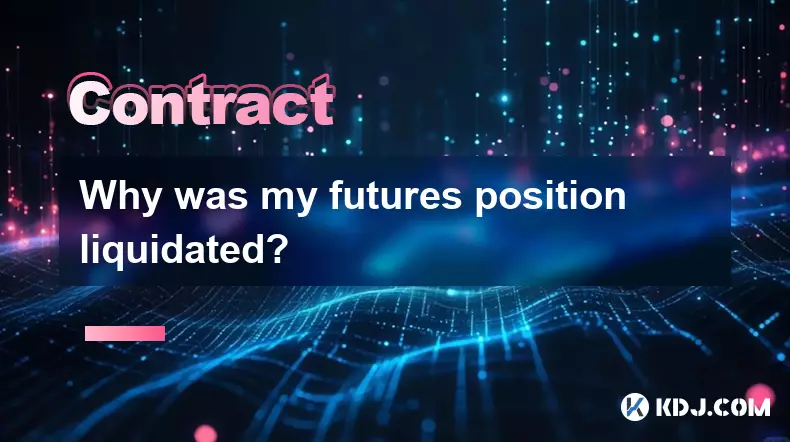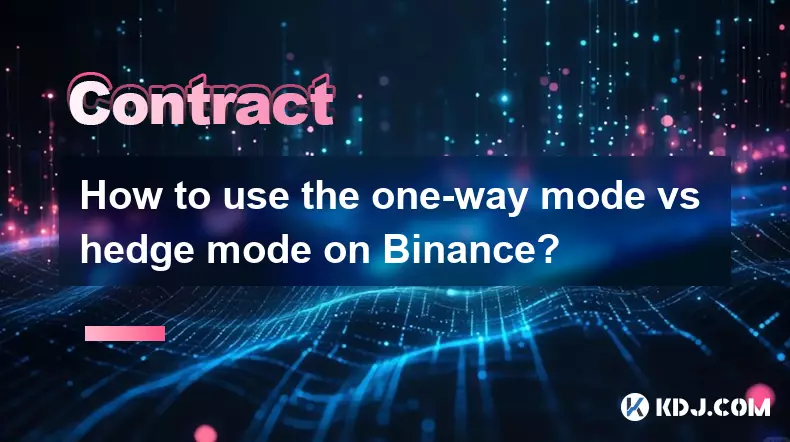-
 Bitcoin
Bitcoin $110700
-0.02% -
 Ethereum
Ethereum $4317
0.30% -
 Tether USDt
Tether USDt $0.0000
-0.01% -
 XRP
XRP $2.820
0.85% -
 BNB
BNB $850.1
0.65% -
 Solana
Solana $204.1
0.76% -
 USDC
USDC $0.9998
0.00% -
 Dogecoin
Dogecoin $0.2185
2.41% -
 TRON
TRON $0.3311
-1.13% -
 Cardano
Cardano $0.8337
2.94% -
 Hyperliquid
Hyperliquid $47.46
4.47% -
 Chainlink
Chainlink $22.38
0.19% -
 Ethena USDe
Ethena USDe $1.001
-0.02% -
 Bitcoin Cash
Bitcoin Cash $608.7
3.65% -
 Sui
Sui $3.388
2.77% -
 Stellar
Stellar $0.3605
2.07% -
 Avalanche
Avalanche $24.49
1.56% -
 Hedera
Hedera $0.2191
2.15% -
 Cronos
Cronos $0.2699
1.45% -
 UNUS SED LEO
UNUS SED LEO $9.539
-0.14% -
 Litecoin
Litecoin $112.2
0.59% -
 Toncoin
Toncoin $3.090
-0.33% -
 Shiba Inu
Shiba Inu $0.00001243
2.30% -
 Polkadot
Polkadot $3.837
1.66% -
 Uniswap
Uniswap $9.408
0.81% -
 Dai
Dai $0.9996
-0.05% -
 Ethena
Ethena $0.7383
13.07% -
 Monero
Monero $268.4
-0.63% -
 Aave
Aave $303.0
-1.26% -
 World Liberty Financial
World Liberty Financial $0.1822
-1.10%
How to trade futures on the Coinbase app?
Coinbase doesn’t offer futures trading directly; users must link to external exchanges or use Coinbase Derivatives for institutional access.
Sep 06, 2025 at 03:54 am

Understanding Futures Trading on Coinbase
1. Futures trading allows users to speculate on the future price of cryptocurrencies without owning the underlying asset. On the Coinbase app, this functionality is not directly available as Coinbase does not currently support native futures trading within its standard interface. However, users can access futures markets through Coinbase Derivatives, a separate platform designed for institutional traders, or by linking their accounts to regulated third-party exchanges that offer futures products.
2. Before engaging in futures trading, users must complete a thorough verification process. This includes identity verification, compliance checks, and demonstrating an understanding of derivatives risk. Coinbase prioritizes regulatory adherence, so access to advanced trading features is granted only after meeting strict eligibility criteria based on jurisdiction and trading experience.
3. The distinction between spot trading and futures trading is critical. While the Coinbase app excels in spot market execution—buying and selling actual cryptocurrencies—futures require margin, leverage, and settlement at a predetermined date. These features are absent in the primary Coinbase consumer app but accessible through partnered derivatives platforms integrated under the Coinbase ecosystem.
4. Traders interested in leveraging price movements should understand that futures contracts involve obligations. Unlike spot trades where ownership is immediate, futures bind the buyer or seller to transact at a set price in the future. This introduces complexity around margin calls, liquidation risks, and funding rates, all of which demand careful monitoring.
5. Regulatory frameworks heavily influence the availability of futures. In the United States, for example, cryptocurrency futures are primarily offered through CFTC-regulated entities. Coinbase adheres to these guidelines, meaning retail users may need to use designated platforms like Bakkt or CME Group for Bitcoin futures, even if they maintain a Coinbase account for spot transactions.
Accessing Futures via Coinbase-Linked Platforms
1. Although the main Coinbase app does not host futures trading, it provides connectivity to external exchanges that do. Users can link their Coinbase Wallet or use API integrations to transfer funds securely to platforms such as Deribit or OKX, where futures contracts with varying leverage options are available.
2. To initiate trading, users must first withdraw funds from their Coinbase balance to a compatible exchange. This typically involves converting assets into stablecoins like USDT or USDC, which serve as margin for futures positions. The process requires navigating withdrawal settings, confirming network fees, and ensuring the receiving exchange supports the selected blockchain.
3. Once funds are transferred, traders can open long or short positions on perpetual or quarterly futures contracts. These platforms offer tools for setting stop-loss orders, take-profit levels, and adjusting leverage—features absent in the standard Coinbase interface but essential for managing risk in volatile markets.
4. Monitoring open positions becomes crucial when trading futures. Price swings can trigger automatic liquidations if margin levels fall below maintenance thresholds. Users must stay vigilant, especially during high-volatility events such as macroeconomic announcements or major protocol upgrades.
5. Settlement mechanisms differ between contract types. Perpetual futures rely on funding rates to align prices with the underlying index, while quarterly futures expire on a fixed date. Understanding these dynamics helps traders avoid unexpected costs or forced closures of positions.
Risks and Strategies in Crypto Futures
1. Leverage amplifies both gains and losses. A position opened with 10x leverage will see a 10% price move result in a 100% gain or loss relative to the initial margin. Traders must assess their risk tolerance before deploying leveraged strategies.
2. Market liquidity affects slippage and execution quality. Thinly traded futures contracts may suffer from wide bid-ask spreads, making entry and exit less predictable. Choosing high-volume pairs like BTC-USD or ETH-USD minimizes this risk.
3. Funding rates in perpetual contracts can erode profits over time. When long positions dominate, funding rates turn positive, requiring longs to pay shorts. Holding positions through multiple funding intervals can accumulate significant costs.
4. Technical analysis plays a central role in timing entries and exits. Chart patterns, volume indicators, and moving averages help identify potential reversal or continuation zones. Combining these with on-chain data enhances decision-making precision.
5. Emotional discipline separates successful traders from those who incur heavy losses. The fast-paced nature of futures markets tempts impulsive decisions. Sticking to a predefined trading plan reduces the impact of fear and greed.
Frequently Asked Questions
Can I trade Bitcoin futures directly on the Coinbase app? No, the Coinbase consumer app does not support futures trading. Users must use Coinbase Derivatives for institutional-grade futures or transfer funds to external exchanges that offer crypto derivatives.
What is the minimum amount required to start futures trading linked to Coinbase? There is no fixed minimum set by Coinbase, but external exchanges often require a minimum margin deposit, typically ranging from $10 to $100 depending on the platform and contract size.
Are futures trades on Coinbase subject to taxes? Yes, any profit from futures trading is considered taxable income in most jurisdictions. Traders must report gains or losses based on their local tax laws, regardless of whether the trade occurred on a Coinbase-linked platform.
How does leverage work when trading futures through Coinbase-connected exchanges? Leverage is provided by the destination exchange, not Coinbase. After transferring funds, users can select leverage levels—commonly between 2x and 100x—depending on the platform's rules and the specific trading pair.
Disclaimer:info@kdj.com
The information provided is not trading advice. kdj.com does not assume any responsibility for any investments made based on the information provided in this article. Cryptocurrencies are highly volatile and it is highly recommended that you invest with caution after thorough research!
If you believe that the content used on this website infringes your copyright, please contact us immediately (info@kdj.com) and we will delete it promptly.
- BullZilla ($BZIL): Riding the Meme Coin Wave with Presale Price Potential
- 2025-09-06 06:45:14
- Bitcoin Whale Awakens: $10 Billion Ethereum Shift?
- 2025-09-06 06:25:11
- Cardano, Pi Network, and Presale Altcoins: What's the Buzz?
- 2025-09-06 04:45:15
- Bitcoin Hashrate, Price, and ATH: Navigating the Crypto Landscape
- 2025-09-06 04:30:12
- Tokens to Watch: Market Cap Projections for 2026
- 2025-09-06 05:05:13
- XRP, Trading Volume, and PayFi Altcoins: What's the Haps?
- 2025-09-06 04:50:12
Related knowledge

What to do if you are about to be liquidated?
Sep 06,2025 at 01:00am
Understanding Liquidation in the Crypto Market1. Liquidation occurs when a trader’s margin balance falls below the required maintenance margin, forcin...

How to trade Ethereum futures?
Sep 05,2025 at 03:54pm
Understanding Ethereum Futures Basics1. Ethereum futures are financial derivatives that allow traders to speculate on the future price of ETH without ...

What is the best leverage for beginners?
Sep 06,2025 at 02:37am
Understanding Leverage in Cryptocurrency Trading1. Leverage allows traders to borrow funds to increase their position size beyond their available capi...

Why was my futures position liquidated?
Sep 06,2025 at 12:18am
Decentralized Exchanges and Their Impact on Crypto Trading1. Decentralized exchanges (DEXs) have reshaped the way users interact with digital assets b...

How to short Bitcoin on Bybit?
Sep 06,2025 at 04:36am
Understanding Short Selling on Bybit1. Short selling Bitcoin on Bybit allows traders to profit from price declines. This strategy involves borrowing B...

How to use the one-way mode vs hedge mode on Binance?
Sep 06,2025 at 07:54am
Understanding One-Way Mode on Binance1. One-way mode functions as a linear trading system where each position is independent and directional. Traders ...

What to do if you are about to be liquidated?
Sep 06,2025 at 01:00am
Understanding Liquidation in the Crypto Market1. Liquidation occurs when a trader’s margin balance falls below the required maintenance margin, forcin...

How to trade Ethereum futures?
Sep 05,2025 at 03:54pm
Understanding Ethereum Futures Basics1. Ethereum futures are financial derivatives that allow traders to speculate on the future price of ETH without ...

What is the best leverage for beginners?
Sep 06,2025 at 02:37am
Understanding Leverage in Cryptocurrency Trading1. Leverage allows traders to borrow funds to increase their position size beyond their available capi...

Why was my futures position liquidated?
Sep 06,2025 at 12:18am
Decentralized Exchanges and Their Impact on Crypto Trading1. Decentralized exchanges (DEXs) have reshaped the way users interact with digital assets b...

How to short Bitcoin on Bybit?
Sep 06,2025 at 04:36am
Understanding Short Selling on Bybit1. Short selling Bitcoin on Bybit allows traders to profit from price declines. This strategy involves borrowing B...

How to use the one-way mode vs hedge mode on Binance?
Sep 06,2025 at 07:54am
Understanding One-Way Mode on Binance1. One-way mode functions as a linear trading system where each position is independent and directional. Traders ...
See all articles

























































































